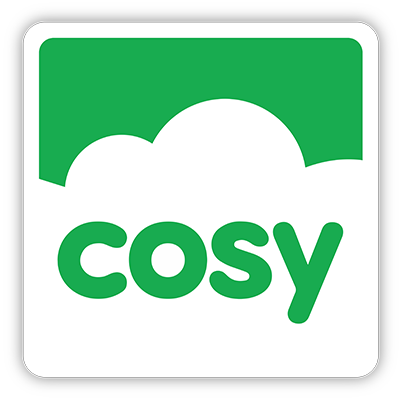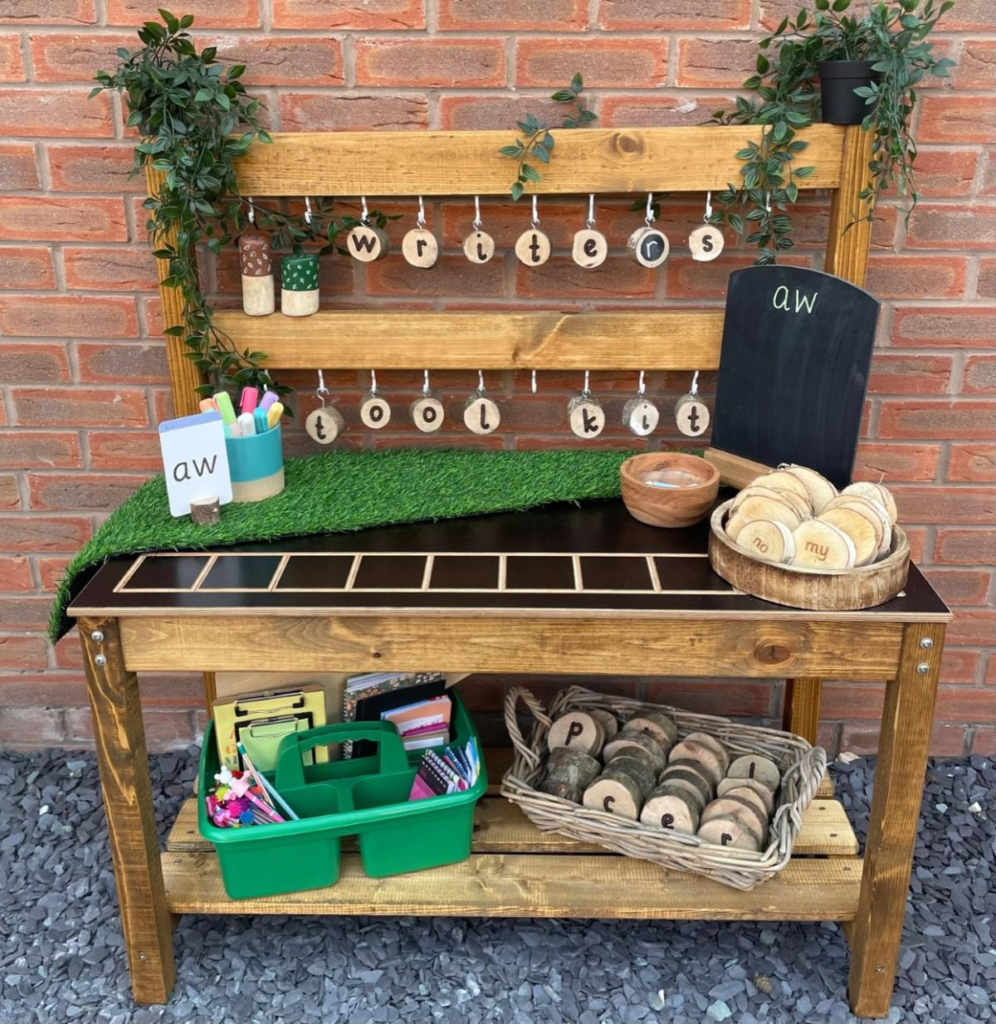A Writers ToolKit
What do we need to have successful, independent writers? First, we need writing resources and then we need a range of meaningful mark making opportunities both indoors and outdoors.
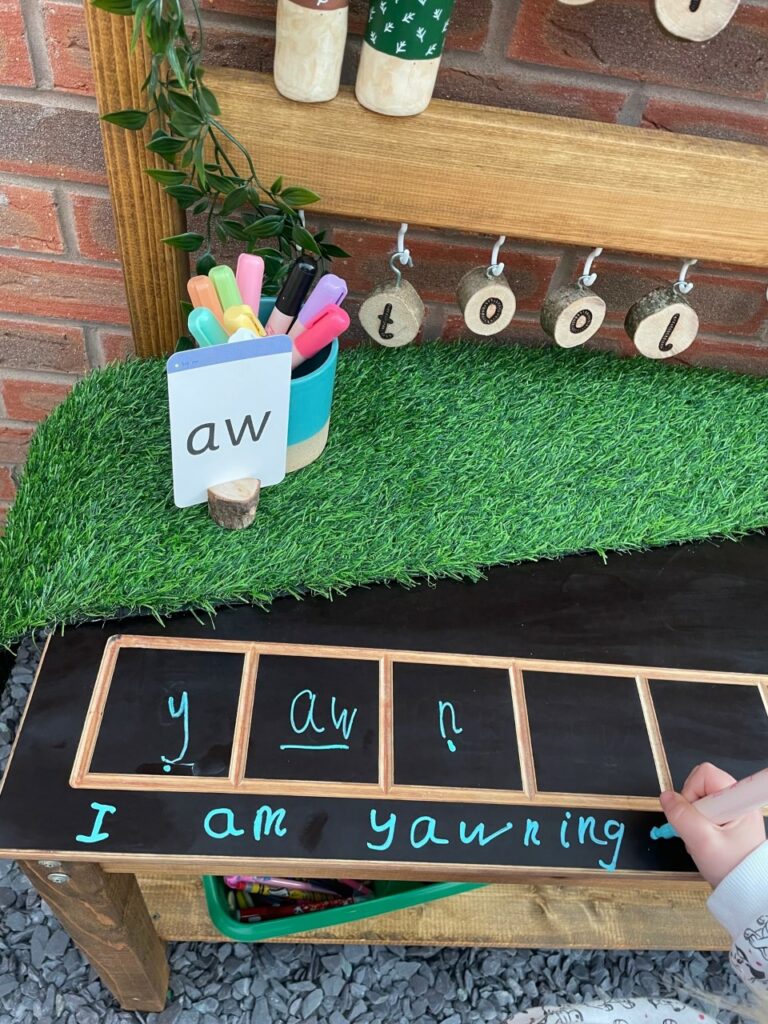
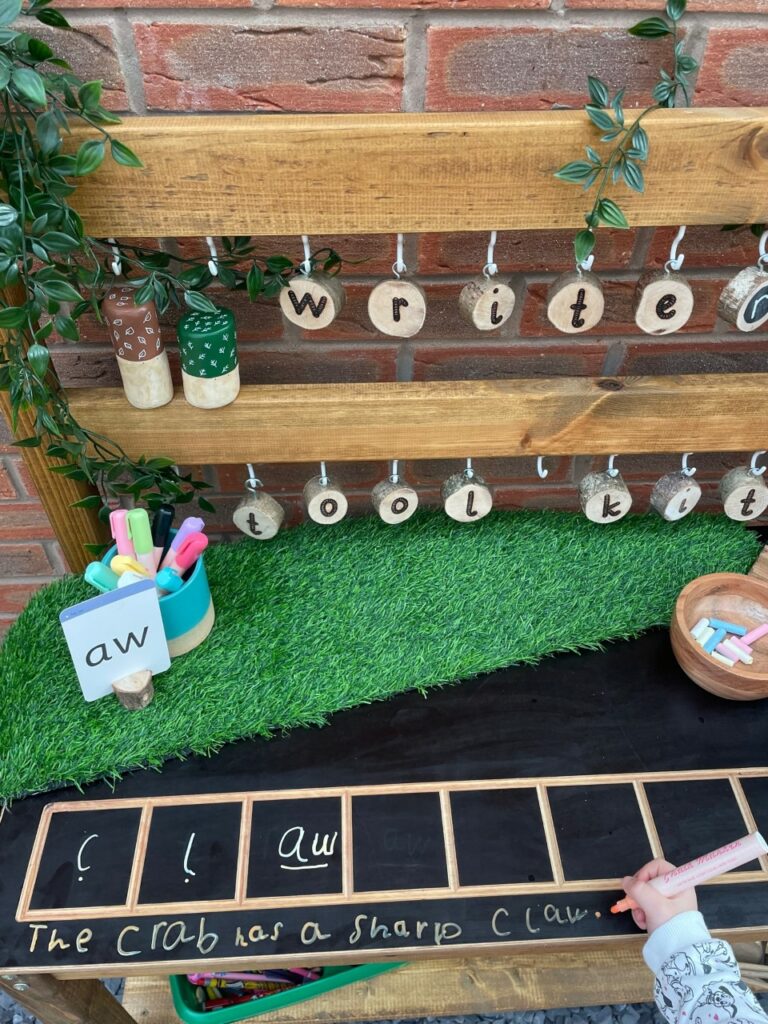
What should I have in my writing area?
Writing areas, mark making areas, message centres, literacy sheds – whatever you decide to call it or wherever you set it up, carefully selected resources can transform a space for writing into a stimulating writing area. Here are a few ideas that can set you on your way:
Try to offer a range of writing surfaces to be used
- Paper or cardboard: assorted sizes, shapes, colours, textures, lined, plain, graph, pre-printed mark making patterns and other variations including large rolls.
- You can offer post it notes, whiteboards, wipeboards, sentence strips, notebooks, diaries, envelopes, stamps, sticky notes, labels, address books, registers, forms, calendars, cards and pads.
- Why not try and make your own books such as stapled, concertina or zigzag.
Consider a range of writing tools – pencils, felt-tip pens, whiteboard pens, markers, crayons, chalks, coloured pencils, highlighters, gel pens and biros. These could all be complimented with optional stationery, such as: pencil sharpeners, rubbers, stampers and ink pads, staplers, hole punches, rulers, scissors, sticky tape, glue sticks, paper clips or treasury tags.
Additional resources can really help to support the quality of writing and improve the experience of writing itself, for example: message boards, display board, post box, clipboards, whiteboards, blackboards, magnetic letters, gel letters, name cards, alphabet strips, word cards, tricky words. It’s beneficial to show examples of environmental print and offer real life adverts, leaflets, take away menus etc. Equally, make sure there is a wide range of inviting mark making resources inside and outside to suit a wide range of interests and learning styles.
Why not try and make your own pen pot like the one below using a tin and some paper wrapped around it. Again, this is another opportunity for writing or mark making as they make it their own.
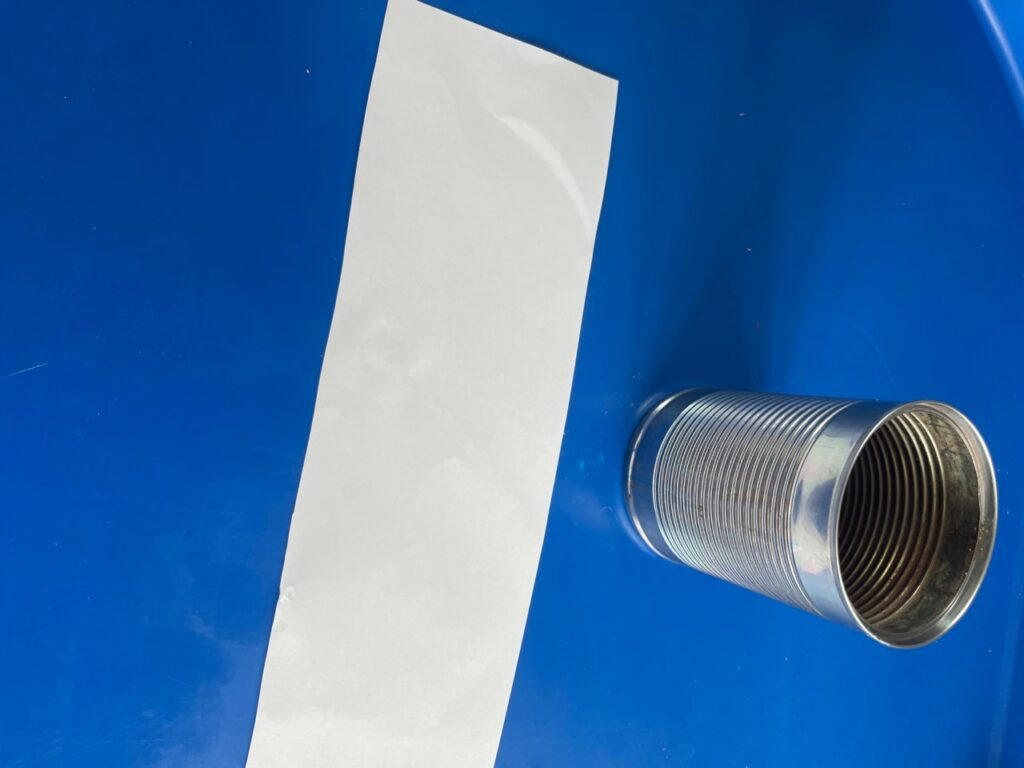
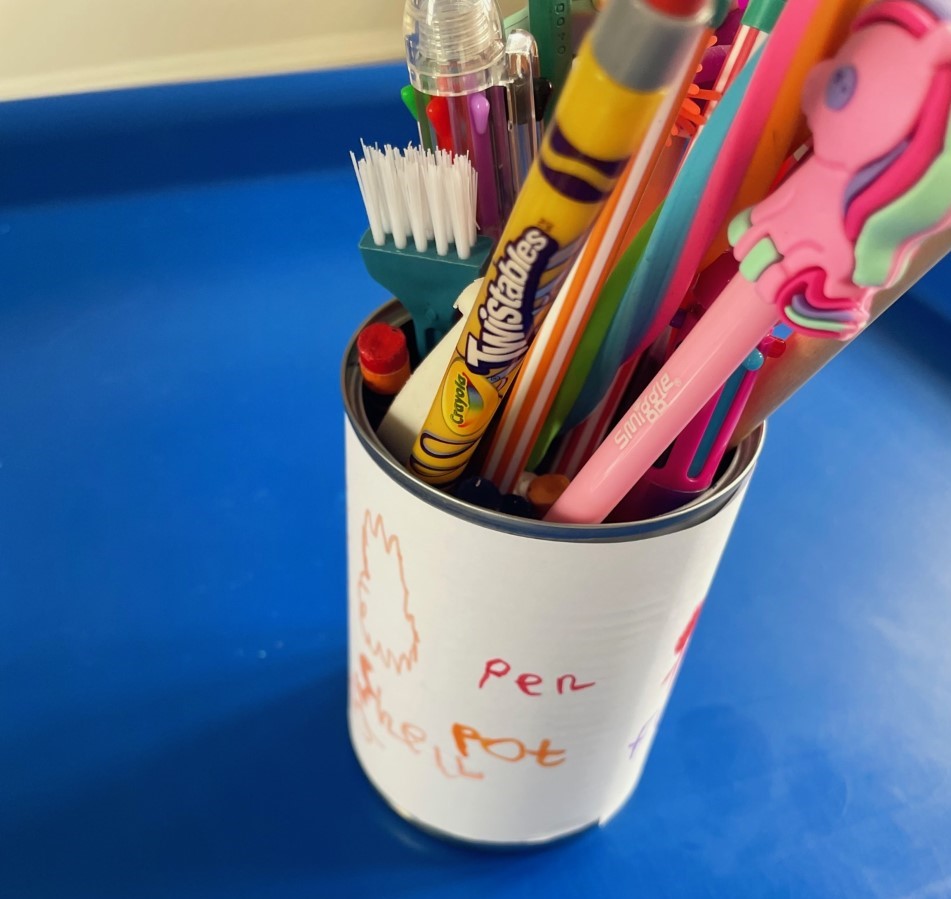
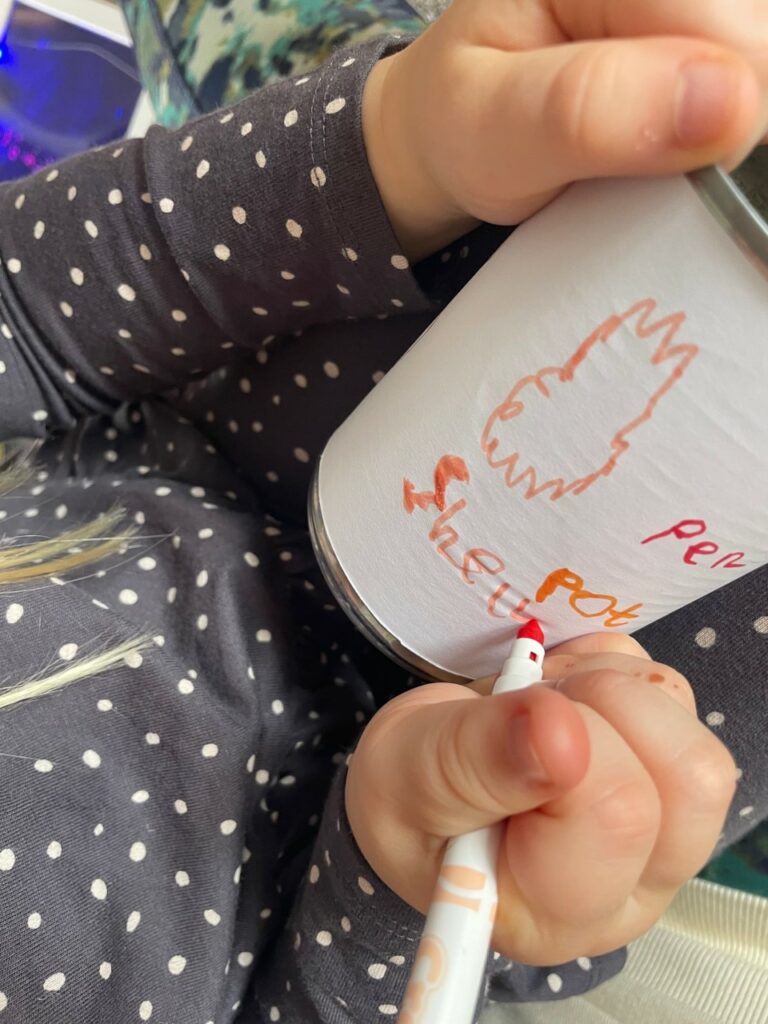
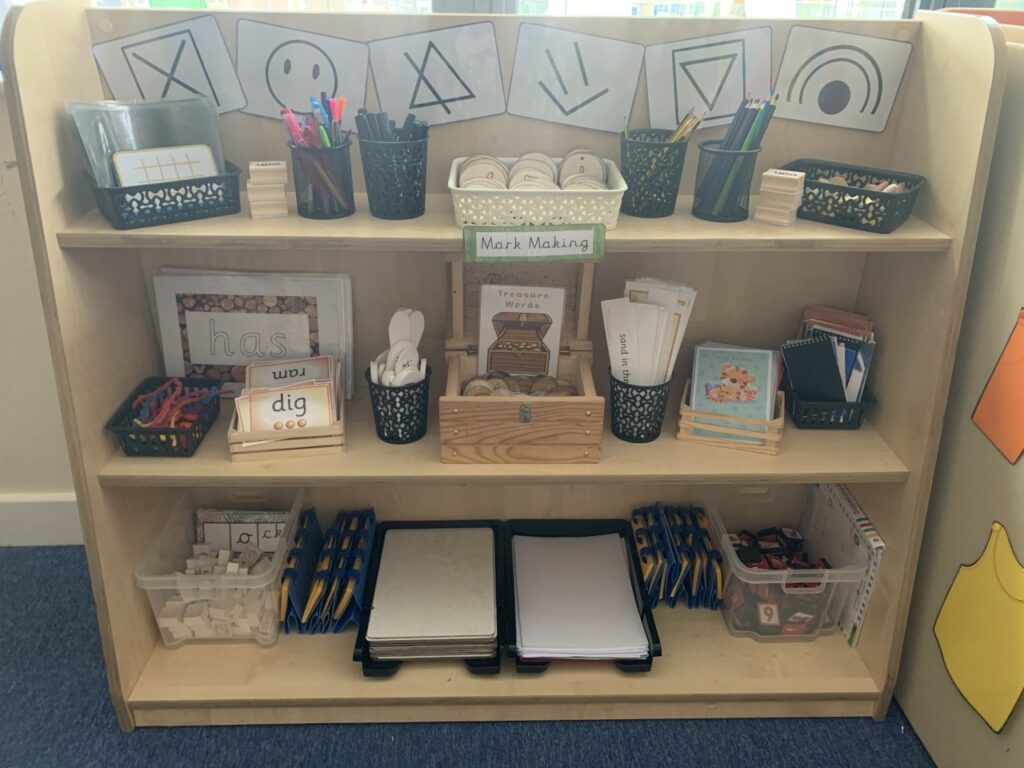
How can I offer opportunities for writing/mark making?
It’s important to give children a reason to write. Give them a hook or make it relevant to them; give writing a purpose. Here are some writing opportunities you could offer:
Signs
Prescriptions (doctor/vet)
Cards
Order forms (builders)
Letters
Food orders
Postcards
Stories and books
Notes
Menus
Invitations
Poetry
Messages
Tickets
Receipts
Recipes
Maps
Posters
Labels
Sign-up sheets
Shopping lists
Captions
Registers
Diaries
Instructions
Driving licences
Score sheets
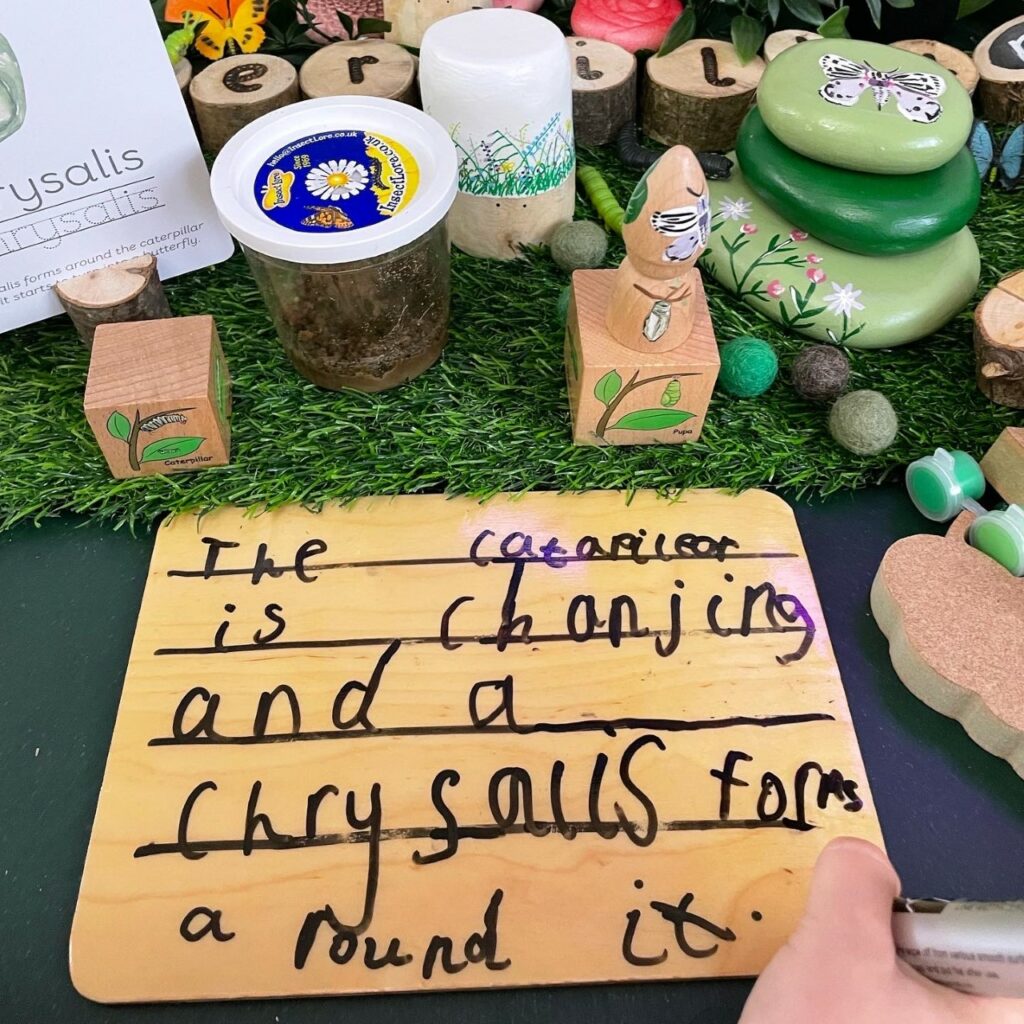
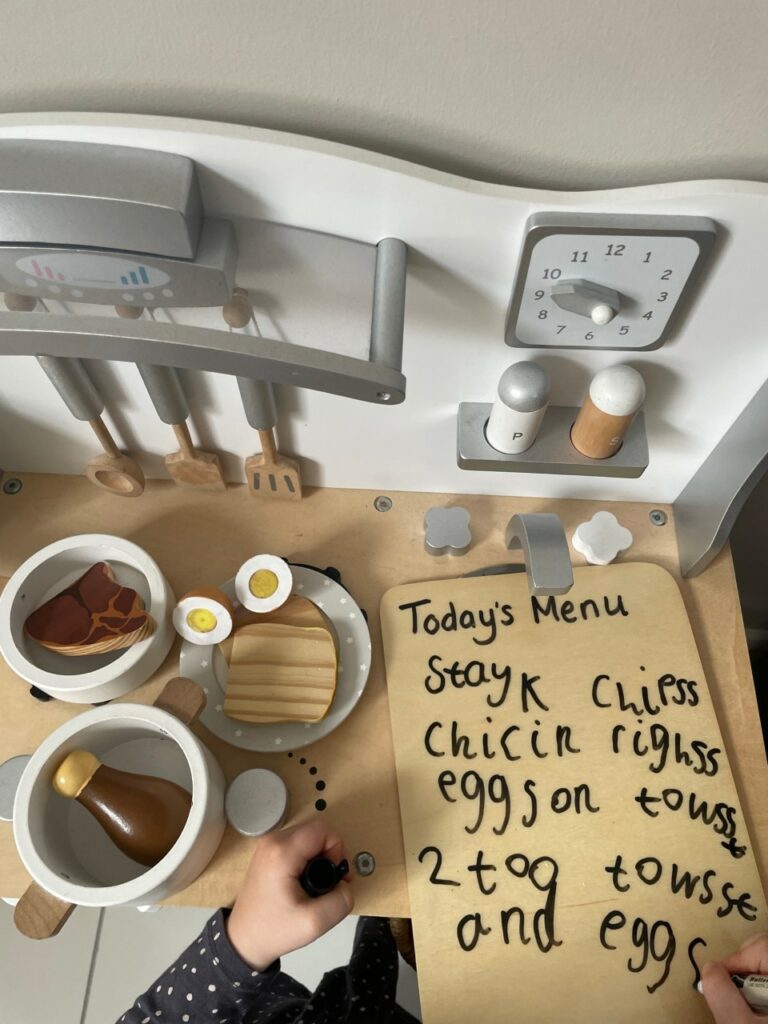
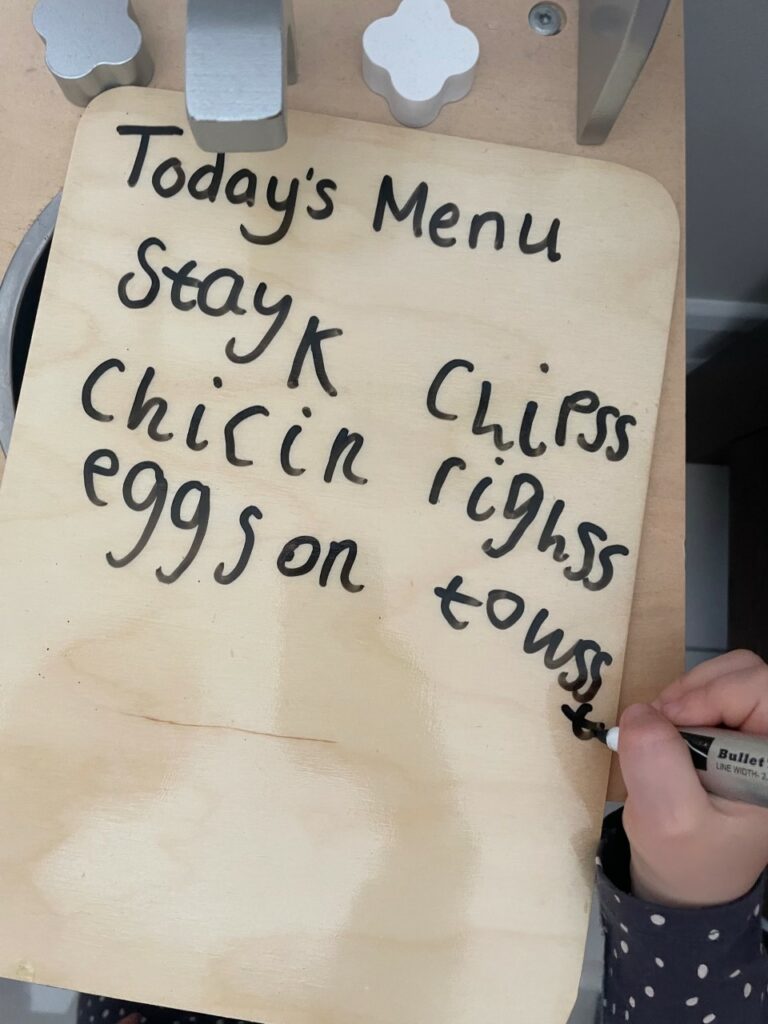
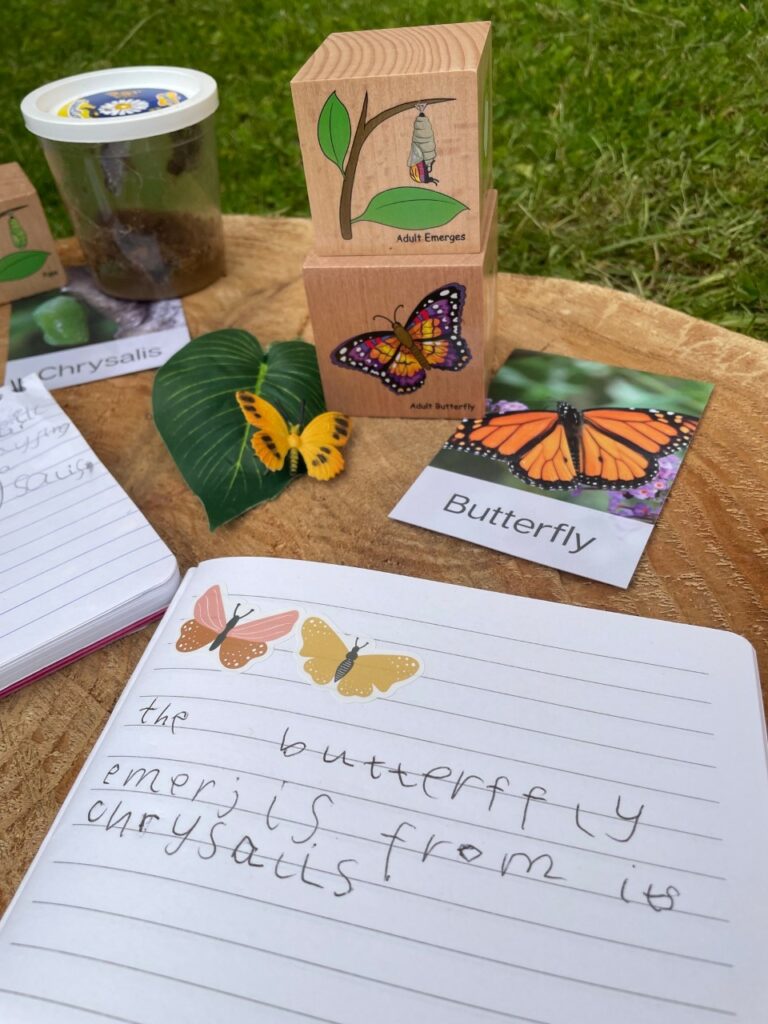
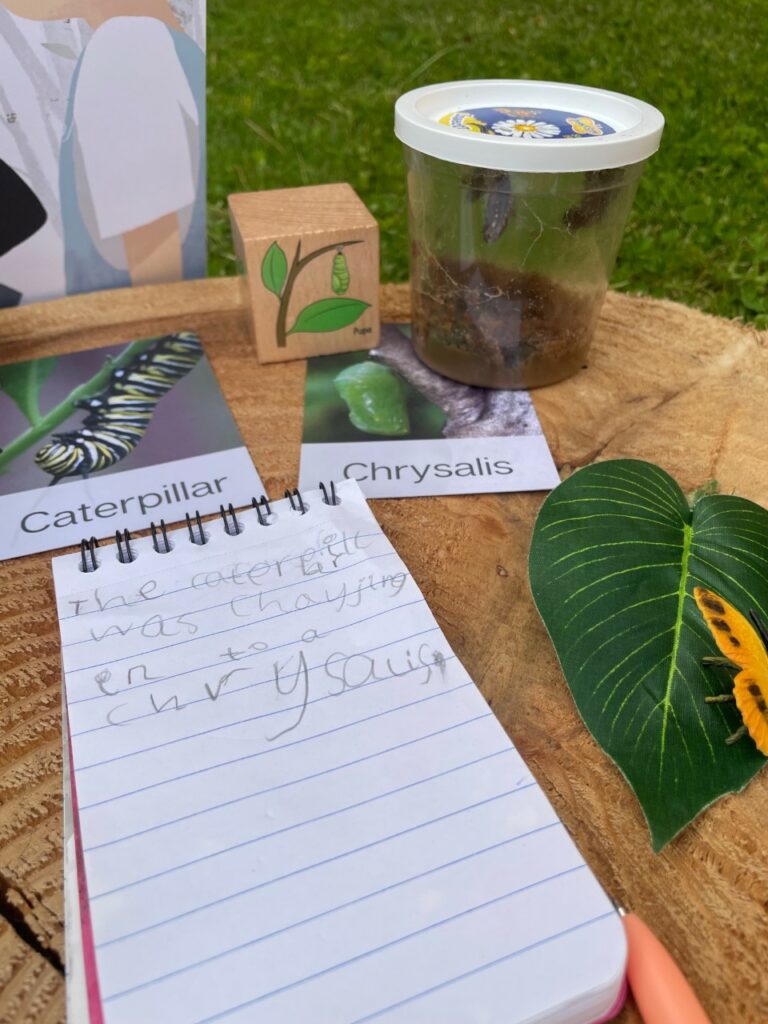
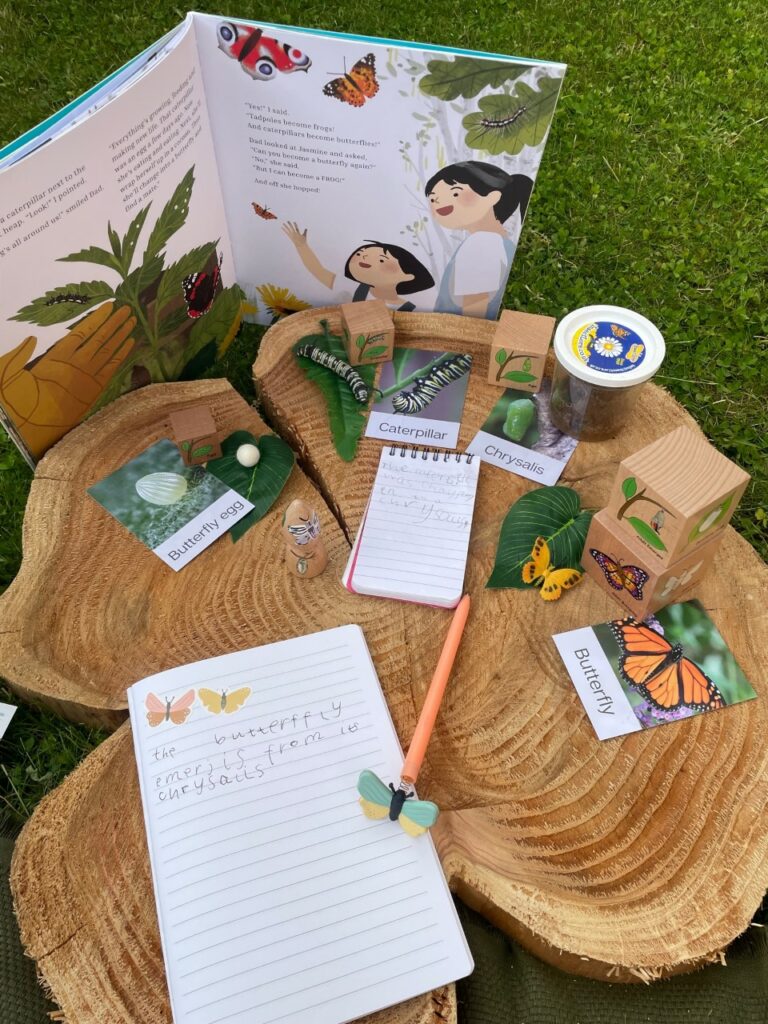
Where should they write?
Anywhere and everywhere! It’s important to offer different writing surfaces / equipment to give children plenty of opportunities to write. Writing doesn’t have to be confined to sitting at a table; you can offer wall writing, under table writing, floor writing both indoors and outdoors. Try to provide mark making opportunities outdoors e.g. mud and twigs, large brushes and water, large sheets of paper and paints, chalking on the floor.
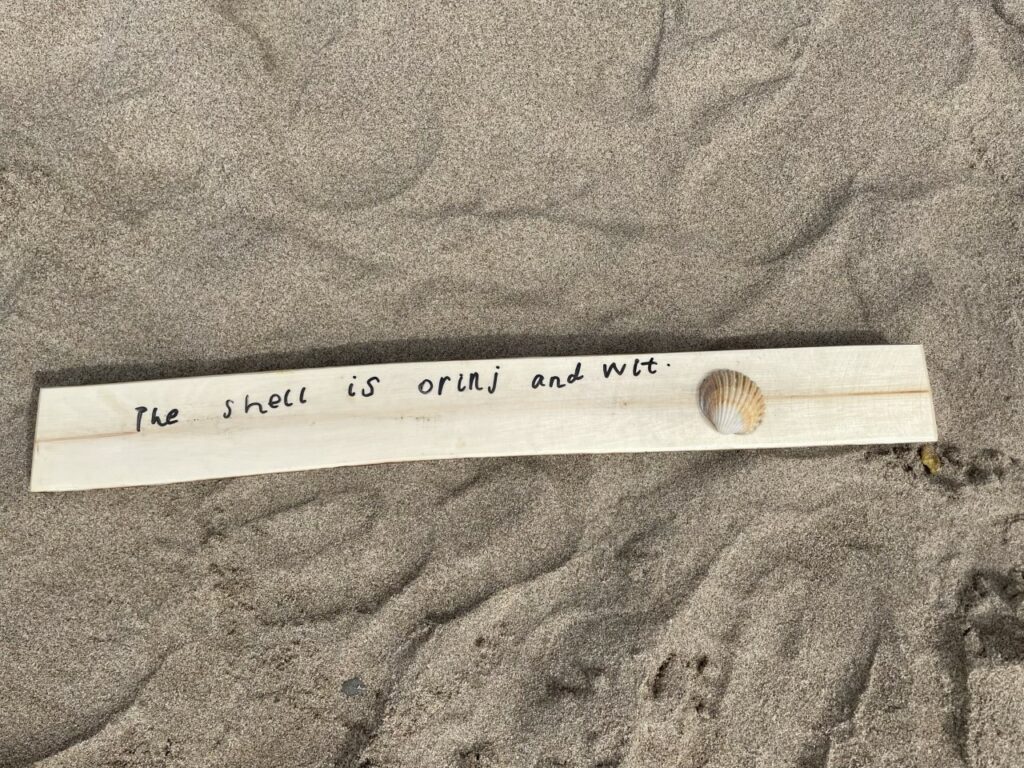
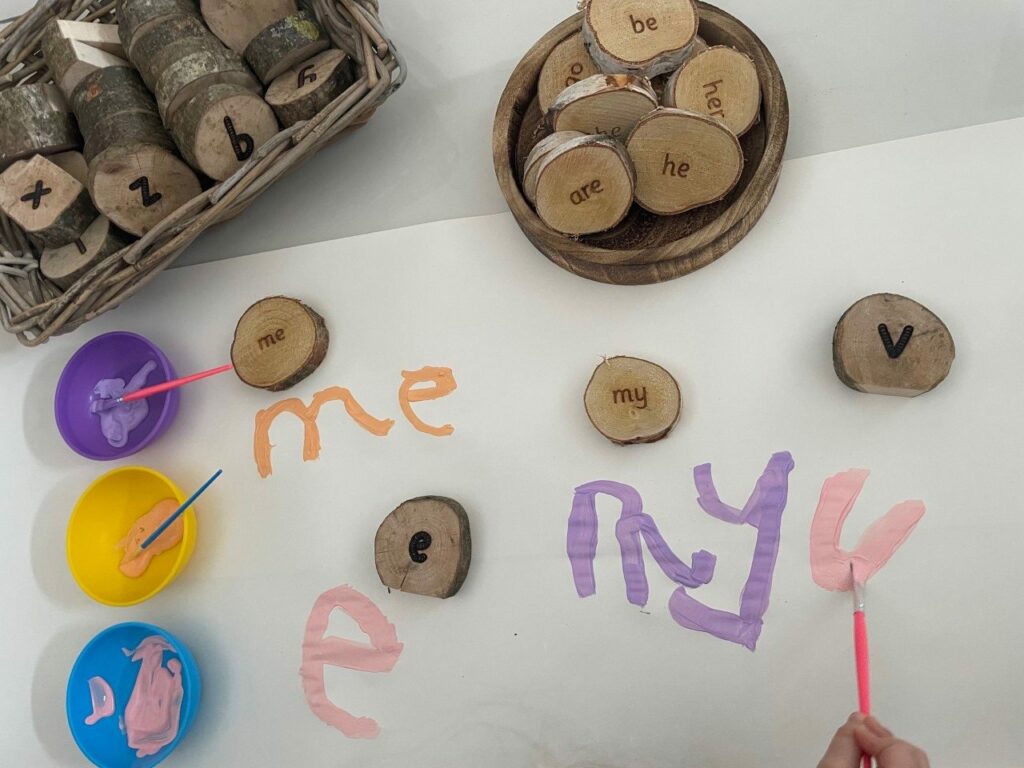
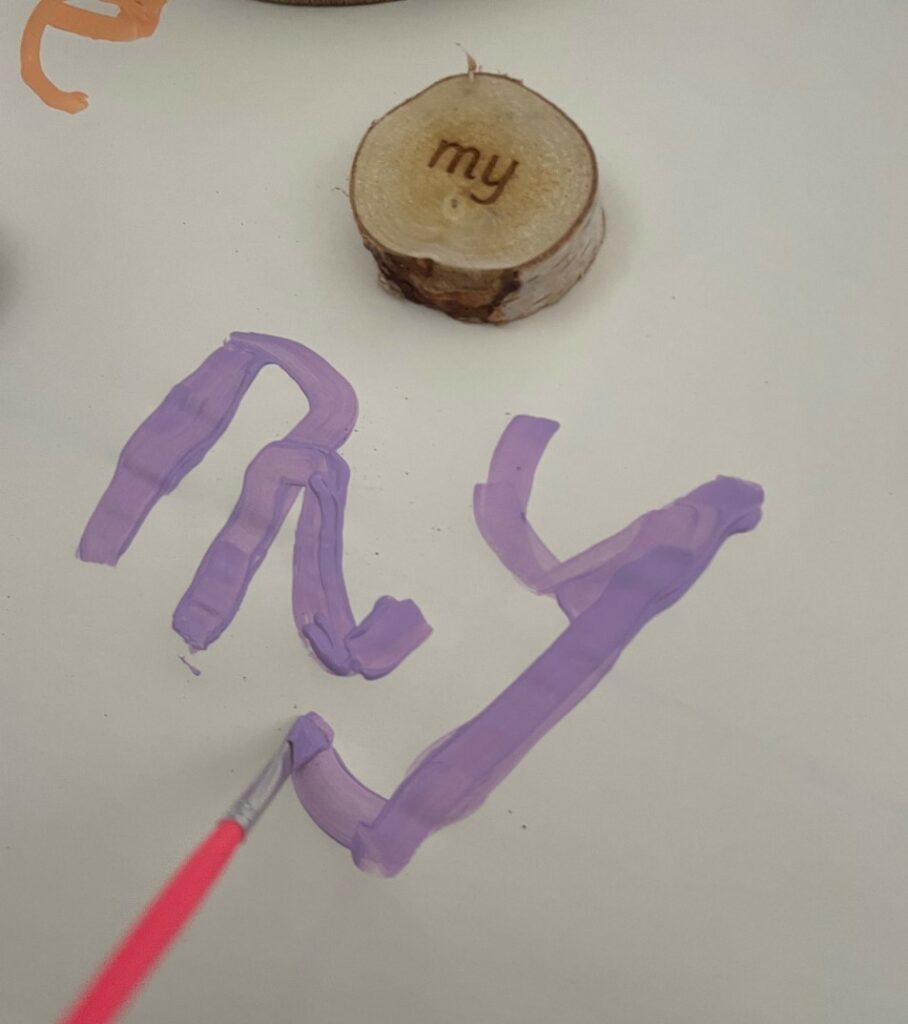
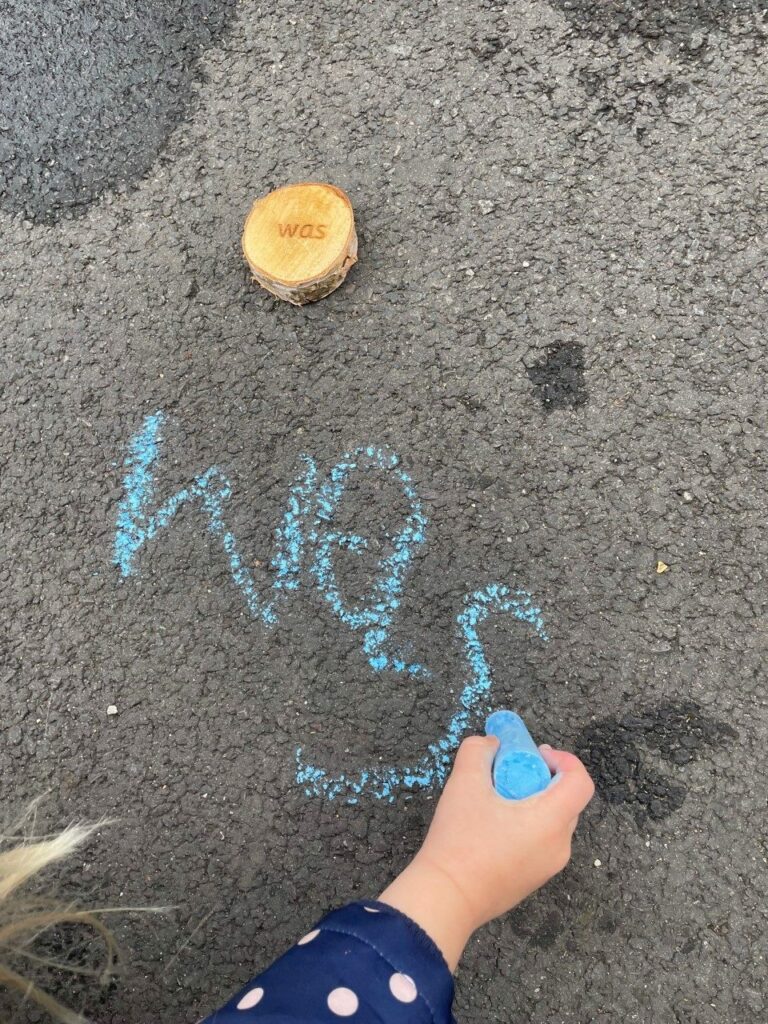
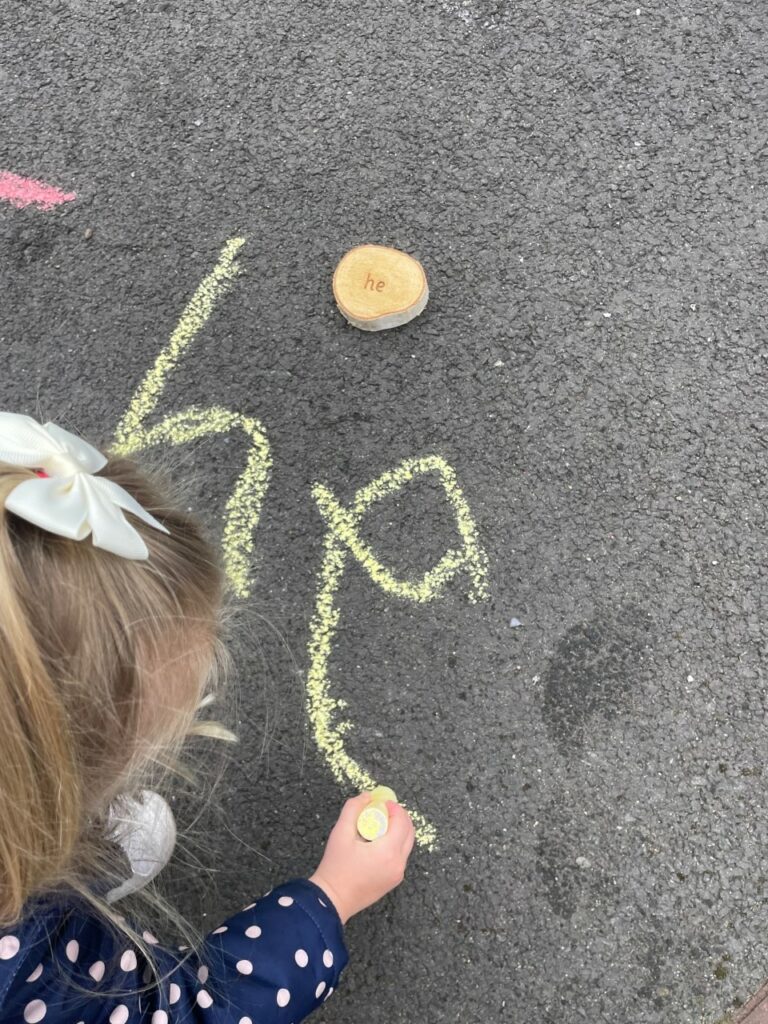
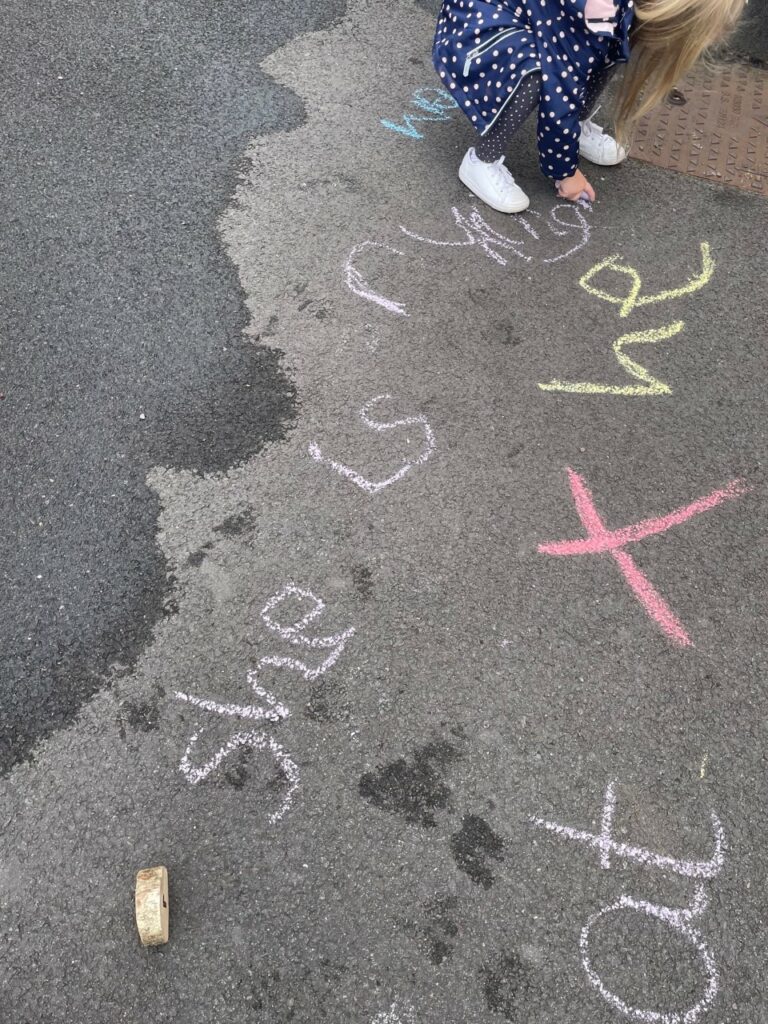
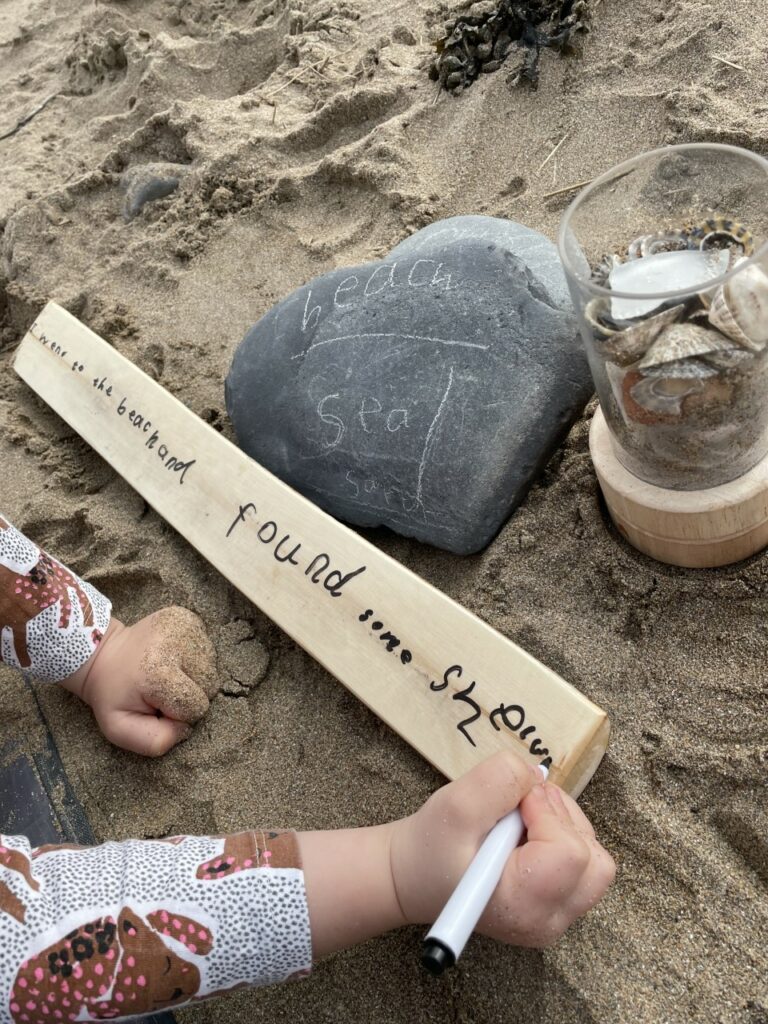
What could I put in my portable writing caddy?
Really and truly, you can put any writing resources into a portable caddy. Here’s a list of suggested items; paper, pencils, sharpener, colourful pens, scissors, glue, post-its, rubbers, highlighters.
Variations on these basics can enhance writing experiences further. You could, for example, adapt paper choice: blank paper, blank paper booklets, lined paper, lined paper booklets, coloured paper, scratch paper, post it notes, whiteboards, wipeboards, sentence strips, cards, notebooks etc. Furthermore, different writing tools can excite and engage children, nurturing a love for writing: pencils, pens, felts, crayons, wax crayons, chalks, whiteboard pens etc.
It's also worth remembering that several optional tools can foster creativity in young learners (scissors, Sellotape, glue, clipboards), as well as developing expectations in the standard of writing (alphabet strips, phonics sound mats, tricky words [on flashcards or wooden slices], writers prompts [capital letters, finger spaces, full stops]).
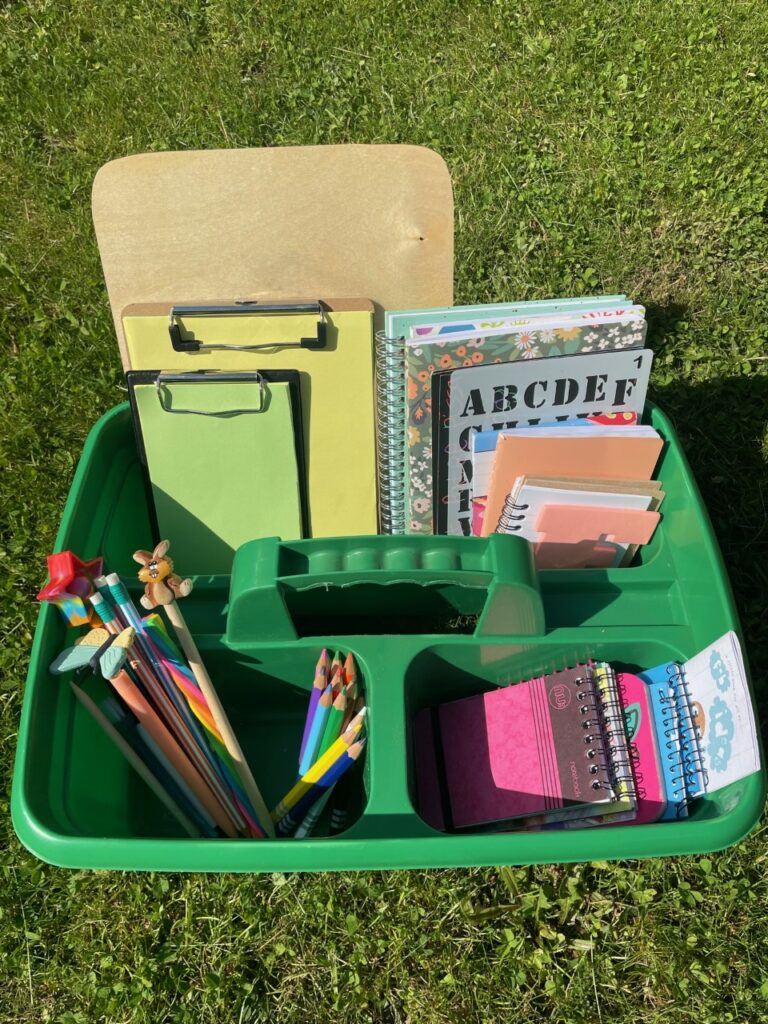
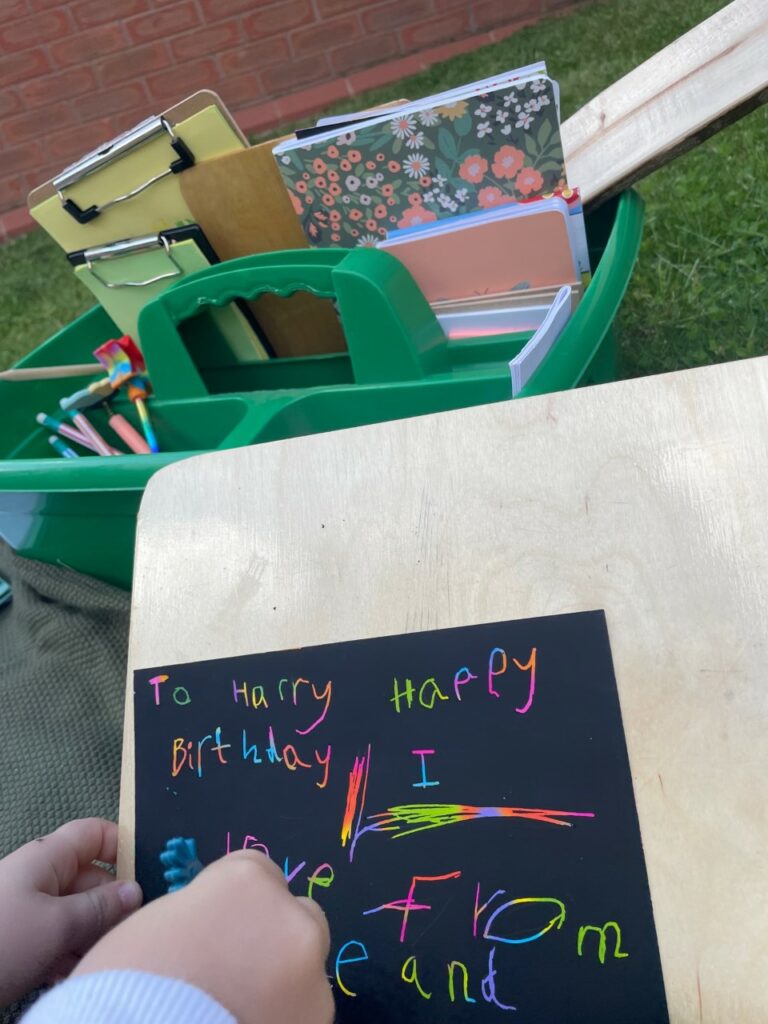
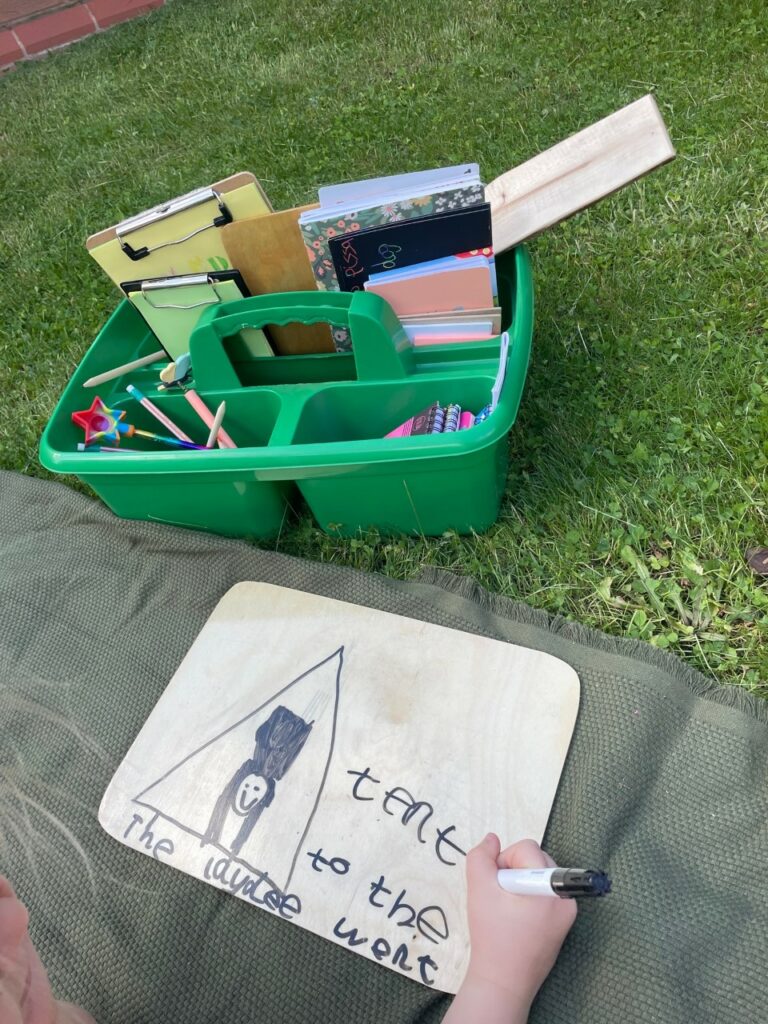
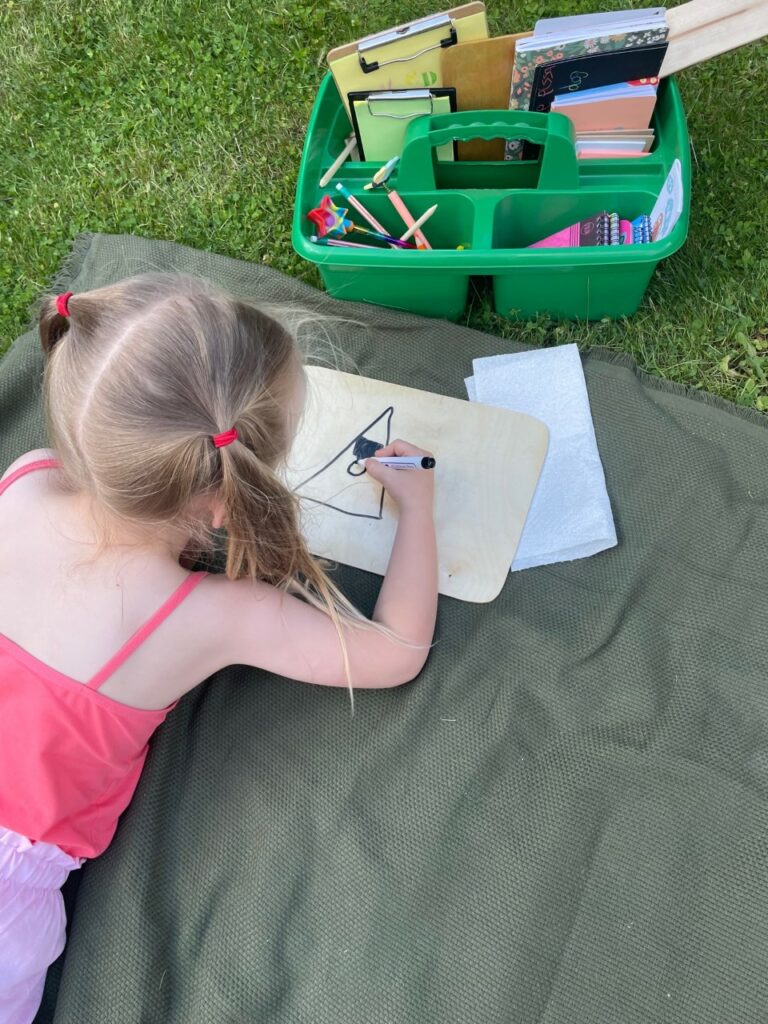
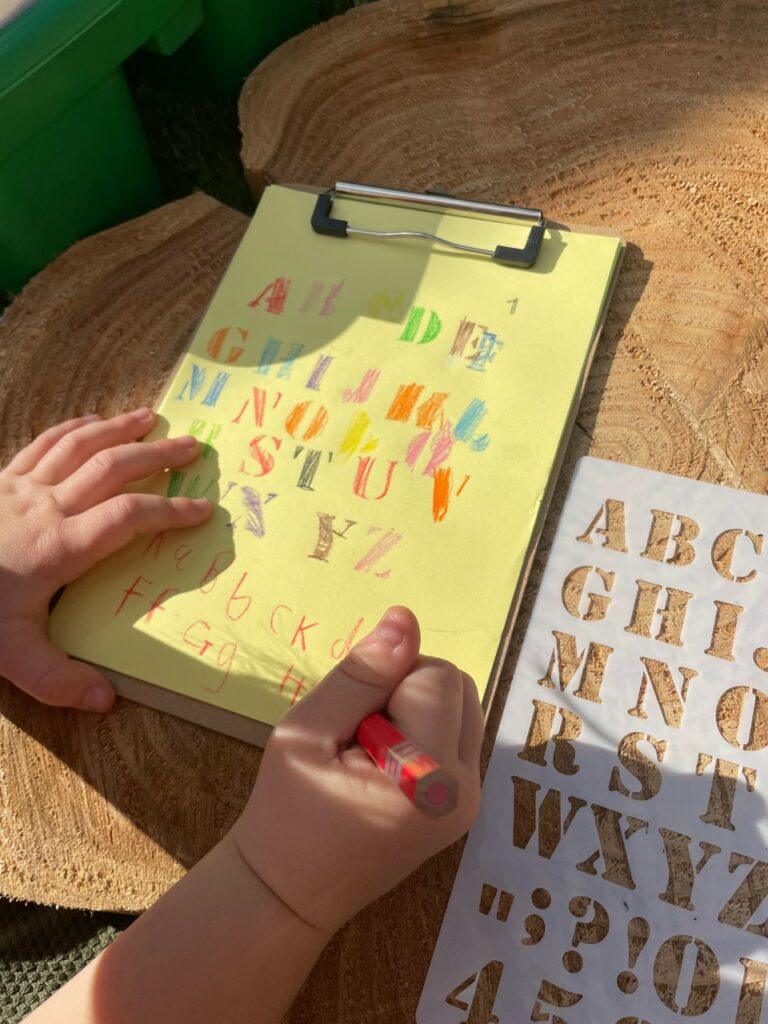
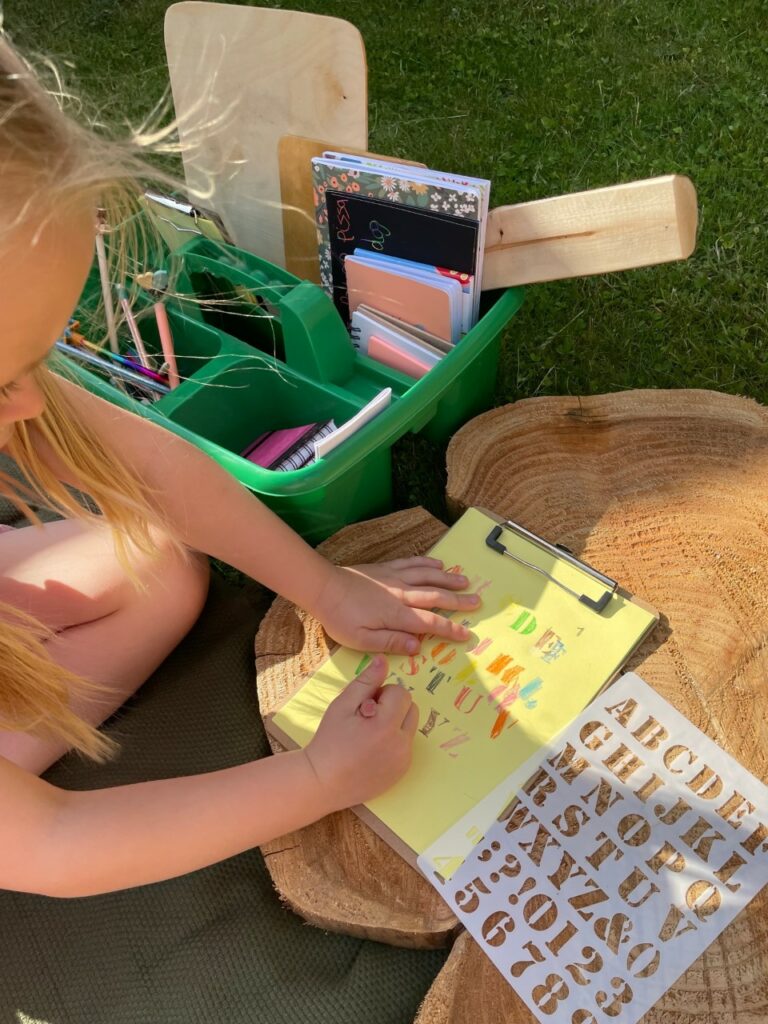
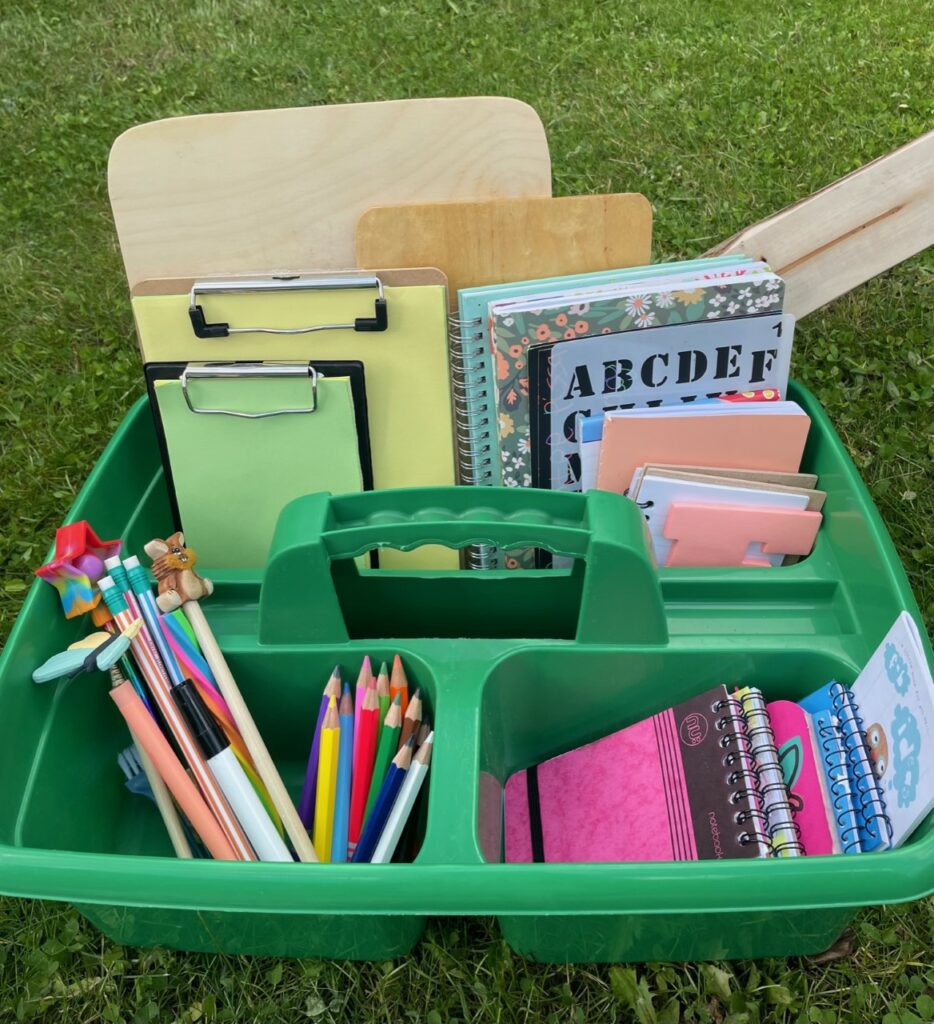
What can I do to help facilitate writing?
I think it’s so interesting that as adults we use writing for note taking as an aide memoire, yet we ask children to write in such an abstract way. We should model and show them how we write and why we write so that they can see the purpose in writing, just as we do. It’s our job to teach children how to use tools & materials effectively.
Model mark making and talk about what you are doing. Model writing initial letters for words in lots of different situations e.g. a shopping list in the role play area, you could model a s (for strawberries) and a m (for milk).
Continually praise children for all writing attempts, as confidence to write is crucial in developing a passion to write.
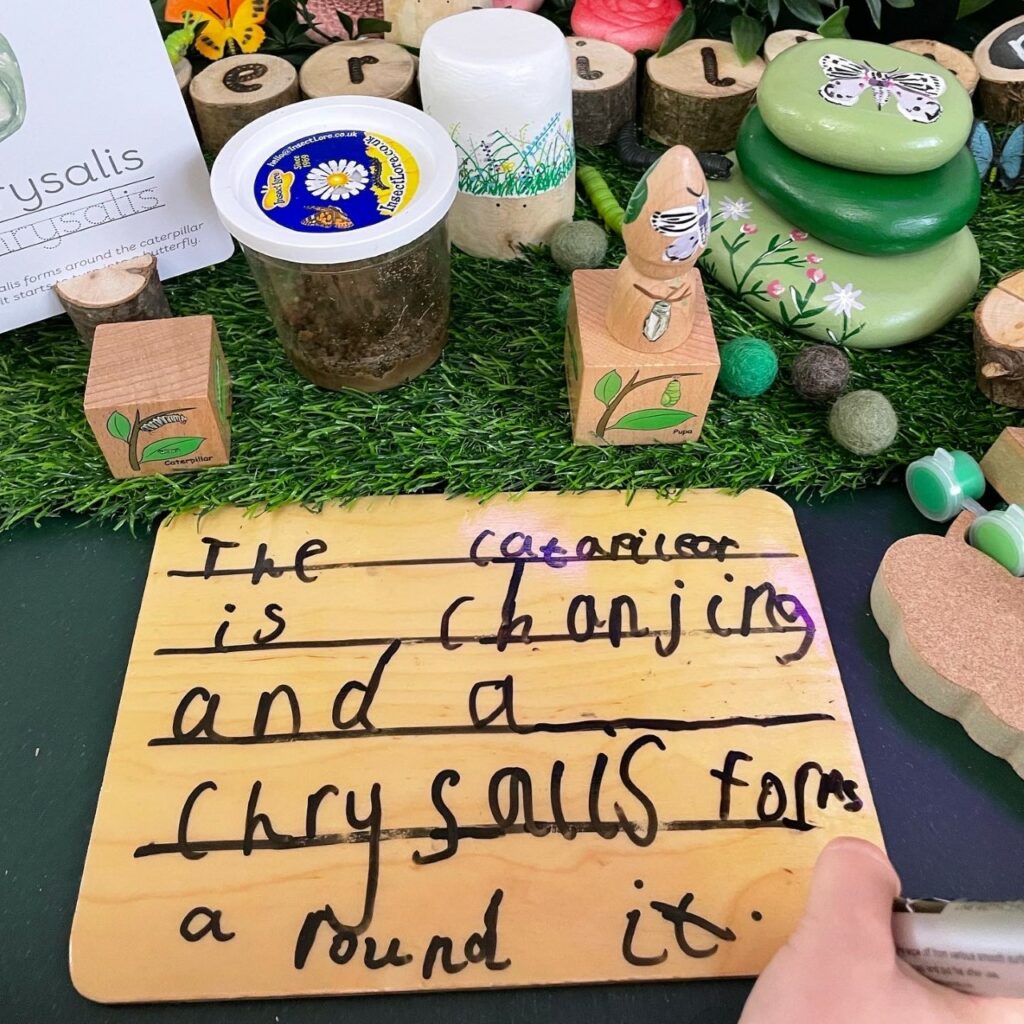
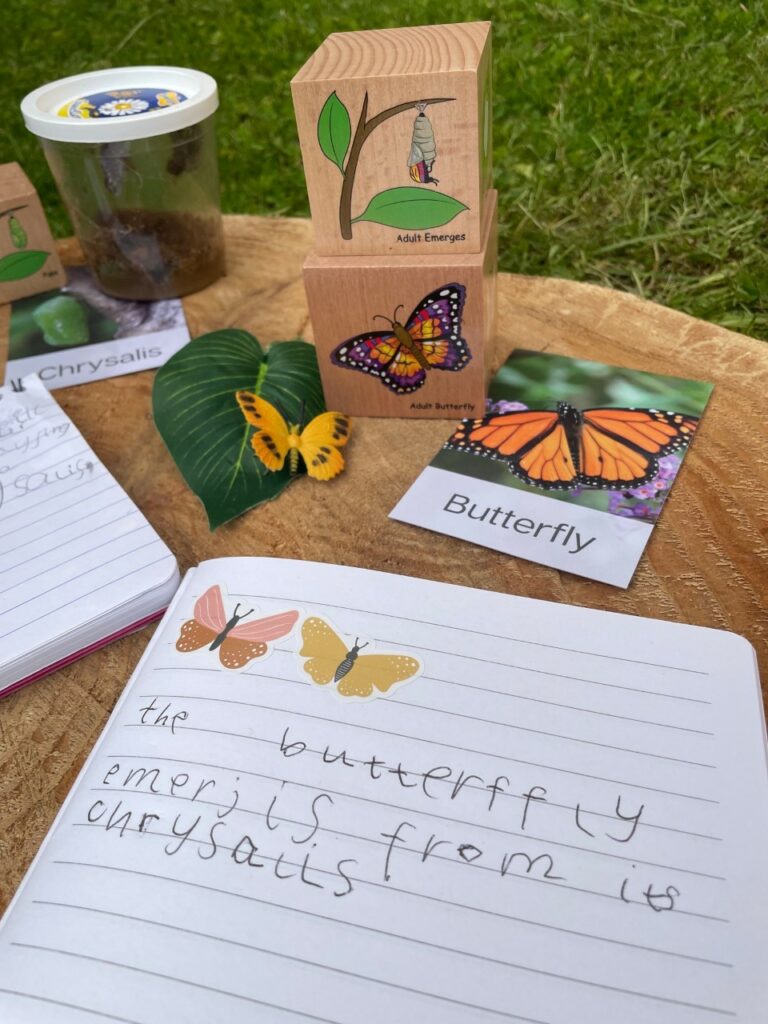
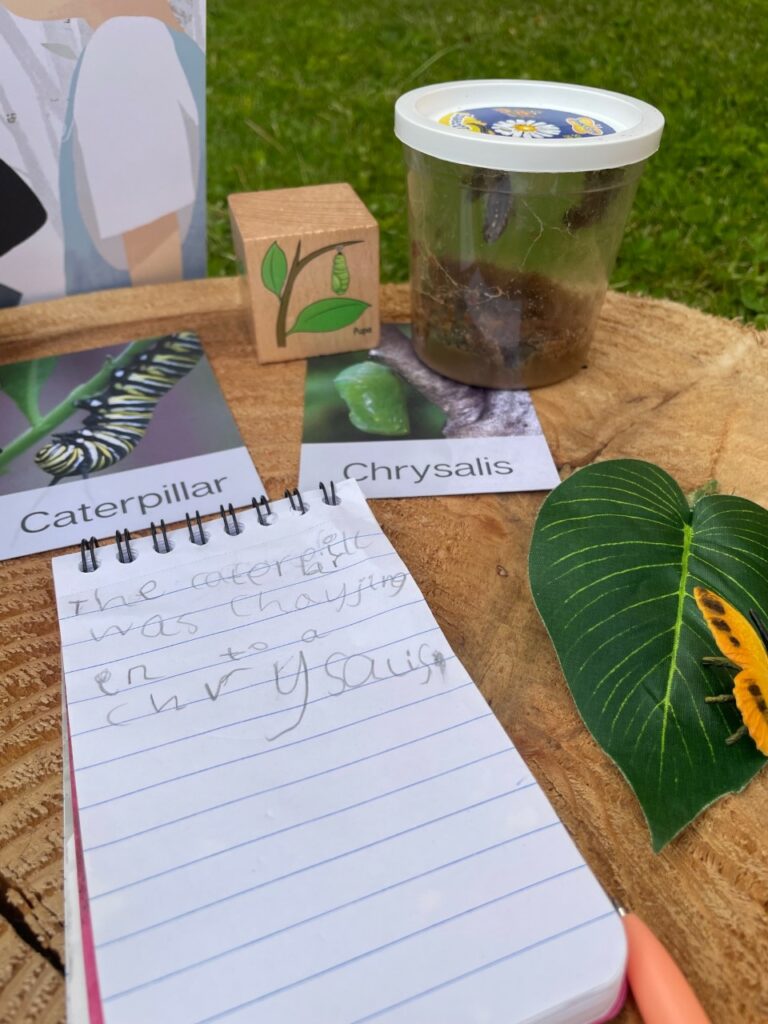
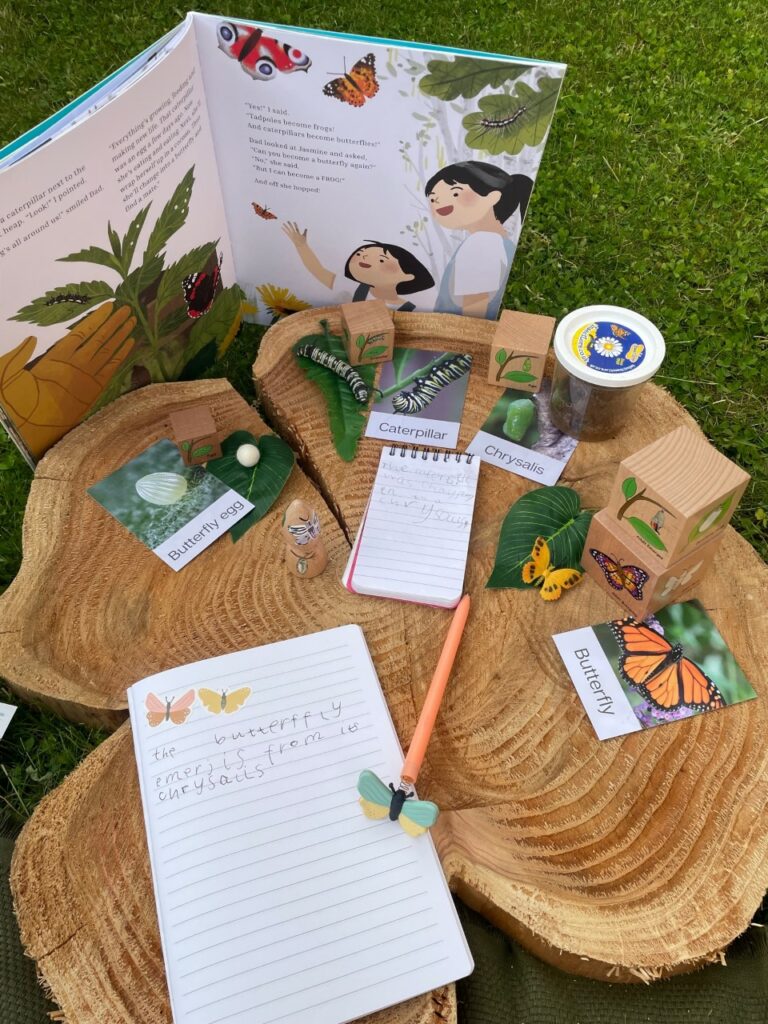
With thanks to @mrs_h_in_eyfs for this blog post
Don’t forget to share your activities with us on our social channels!
Facebook:https://www.facebook.com/cosydirect/
Twitter:https://twitter.com/cosydirect
Instagram:https://www.instagram.com/cosydirect/
